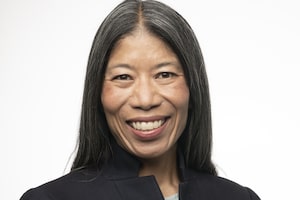Sandra Martin, standards editor for The Globe and Mail.Fred Lum/the Globe and Mail
“What do you do, anyway?” is a question I’ve been asked often since starting my new role at The Globe and Mail last month. The answer really needs to start with a few words about my predecessor, Sylvia Stead, whose monthly column filled this space until her retirement in June.
Before she stepped into the job a decade ago, The Globe and Mail had never employed a public editor. Ms. Stead, having served as a reporter, national editor, executive editor and deputy editor, made the case for the role and, during her tenure, replied to thousands of reader emails while chronicling many of the ethical and practical newsroom concerns she mediated.
Globe journalists and audiences alike knew she was the person to contact with complaints, corrections, conundrums. But that’s just a fraction of what the public editor does week to week and month to month. If you had to sum up the job in five words or less, “the conscience of the newspaper” – as The Globe’s writer at large, John Ibbitson, called Ms. Stead – is a pretty good description.
Many news organizations have a public editor, some known as the ombudsman or ombud, as at the CBC; readers’ editor, as at The Guardian; or, like me, standards editor. We even have an official association, the Organization of News Ombudsmen and Standards Editors (ONO), with about 90 members and associate members from around the world.
Though our job descriptions vary, our primary goal is the same: to uphold our organization’s editorial code of conduct (you can find The Globe’s at tgam.ca/editorial-code).
“An ombudsman is there to ask simple questions: ‘Are you sure?’ ‘How do you know?’ S/he is there to connect the public with the media organization to assure that the content produced is of the highest standards. And if not, why not? The readers, listeners and viewers deserve no less,” Jeffrey Dvorkin, ONO’s executive director from 2009 to 2013, writes in The Modern News Ombudsman: A User’s Guide, originally published in 2011 and updated in 2020.
That connection and accountability to readers are essential to building credibility and trust. And with trust in the news media in steady decline, that aspect of the job is more important than ever.
At around the time Bob Woodward and Carl Bernstein broke the Watergate scandal for The Washington Post, the polling company Gallup pegged the proportion of Americans who found mainstream news media essentially trustworthy at about 75 per cent, said Margaret Sullivan, former New York Times public editor, in an address to ONO members in June. “That’s been on a precipitous decline ever since.”
In Canada, the proportion of the public who trusts “most news most of the time” has fallen to 40 per cent this year from 55 per cent in 2016, according to the Reuters Institute 2023 Digital News Report. (Trust in The Globe and Mail is higher than the average at 53 per cent, according to the report.)
Ms. Sullivan called this decline in public trust “the key problem of journalism at this moment.”
Standards editors, assemble.
Trust – and rebuilding trust – requires integrity, transparency and accountability, the three words that comprise our professional organization’s tagline.
“The ombudsman can show the public how the media organization works, and can get answers when a newspaper or broadcaster appears to slip up. When there is more accountability, there is better journalism. It is often as simple as that,” Mr. Dvorkin notes in his guide.
As standards editor, I work with The Globe’s journalists to answer questions from readers, as well as resolve issues involving story sources or subjects. I do so independently from the newsroom; to participate actively in assigning, reporting or editing could put me in conflict. If a legal concern arises (on occasion legal actions are delivered to the standardseditor@globeandmail.com e-mail address), I involve The Globe’s legal team as soon as possible.
When you click the “report an error” button at the bottom of an article on our website, that feedback is routed to me as well, and I start most days by reading through the notifications that have come through overnight. (Yes, I read each and every e-mail that lands in my inbox.) After fact-checking to confirm an error has, indeed, been made, I check in with the reporter and/or editor. In some cases, independent fact-checking alone isn’t sufficient to confirm an error or how it should be corrected, and so some collaboration is required. If a correction, clarification or update is called for, I work with Globe editors to get it published online and in print as soon as possible.
If you have a question about a particular story or The Globe’s journalism in general (and I mean a question, not an angry rant – although I read those, too), I follow a similar process to research the answer. My intention is to maintain a two-way conversation with the Globe community, both inside and outside our newsroom – building integrity, transparency and accountability, one message at a time.
 Sandra E. Martin
Sandra E. Martin